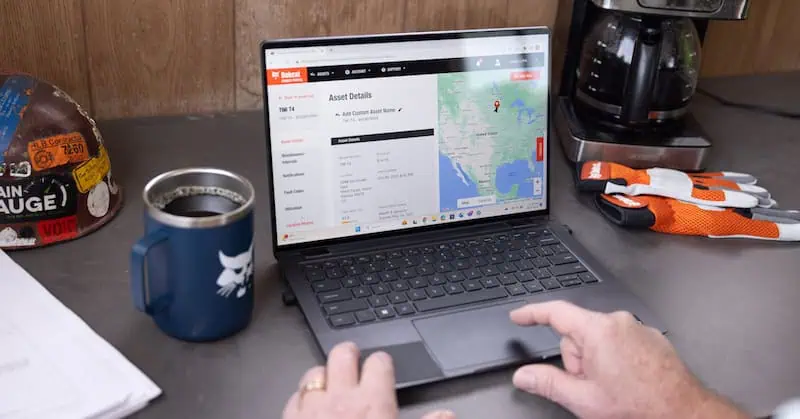Tips For Preventing Heavy Equipment And Vehicle Theft

To call attention to vehicle theft and urge owners and operators to take preventive steps to keep their vehicles and equipment safe, the U.S. Department of Transportation’s National Highway Traffic Safety Administration (NHTSA) observes National Vehicle Theft Prevention Month each July.
Equipment theft disrupts access to critical machinery, delays vital infrastructure projects, drives up costs, and strains entire industries that rely on timely, efficient operations, according to the American Rental Association (ARA). Once equipment is taken from a rental yard or job site with a fraudulent renter or thief, it is rarely recovered. Equipment commonly targeted by thieves — such as backhoes, bulldozers and loaders — is often sold on the black market or to unsuspecting buyers on popular resell sites.
For the equipment rental industry alone, equipment theft is a $100 million-a-year crisis, according to the ARA: More than 360 pieces of equipment vanish each month, draining resources and threatening the stability of critical operations nationwide.
In response to the growing crisis of equipment theft, in April the ARA outlined new theft prevention and recovery programs that arm equipment rental businesses with resources to identify potential threats and prevent theft. Equipment Rental Guard (ERG) offers knowledge, tools, and resources to verify renters, prevent theft, and protect assets. The ERG program includes training courses, red flag renter text alerts, a national database of problematic renters and stolen equipment, and ID verification. Theft reporting guidance, financial security tools, and free legal assistance are also available through the ERG program.

“I think it’s incredibly important for all of us to band together ,” says David Skala, manager, B.I. Rental, Homer Glen, IL. “This problem is so huge that unless every individual who is involved takes action, there’s not going to be any movement forward. I think all the tools that ARA is introducing are absolutely fantastic, and I’m looking forward to implementing them in our store.”
Equipment theft is not just an issue for rentals: In 2024, heavy equipment theft cost the North American construction industry between $300 million and $1 billion, reported Neuroject, representing one of the most significant financial burdens for construction companies.
Factors ranging from economic influences to organizational vulnerabilities contribute to theft in construction statistics. Here are some of the key contributors, according to Neuroject:
- Economic Conditions: Economic factors play a significant role in driving theft in the construction industry. Economic downturns, high unemployment rates, and fluctuations in material prices can increase the incentive for theft in construction statistics. During economic downturns, individuals may resort to theft as a means of survival or to capitalize on the high demand for construction materials.
- High-Value Assets: Construction sites are filled with high-value assets such as heavy machinery, power tools, and construction materials. These assets are often left unattended, making them easy targets for thieves. The high resale value of stolen equipment and materials further incentivizes theft.
- Lack of Security Measures: Inadequate security measures at construction sites create opportunities for theft. Poorly secured sites, lack of perimeter fencing, inadequate lighting, and limited surveillance contribute to the vulnerability of construction assets. Thieves are more likely to target sites with lax security measures as they present lower risks of detection and apprehension.
- Insider Threats: Theft in construction statistics is not always perpetrated by external actors; insider threats are also a significant concern. Employees, subcontractors, and other personnel with access to construction sites may exploit their positions to steal equipment or materials. Insider theft can be challenging to detect and prevent, particularly if proper vetting and supervision protocols are not in place.
- Organized Crime Involvement: Organized crime groups often target the construction industry due to the lucrative nature of construction assets. These groups may operate sophisticated theft rings that specialize in stealing and fencing construction equipment and materials. Organized crime involvement can exacerbate theft rates and pose significant challenges for law enforcement agencies.
- Remote Locations: Construction sites located in remote or rural areas are particularly vulnerable to theft. Limited access to law enforcement and surveillance resources in these areas makes it easier for thieves to operate without detection. Furthermore, remote sites may lack basic infrastructure, such as reliable internet connectivity, hindering the implementation of theft in construction prevention technologies.
- Inadequate Record-Keeping: Poor record-keeping practices can facilitate theft by making it easier for thieves to conceal stolen assets. Without proper documentation and inventory management systems in place, construction companies may struggle to identify missing equipment or materials until it’s too late. Effective record-keeping is essential for detecting theft and initiating timely responses.
Reducing The Risk Of Equipment Theft
With this in mind, Bobcat Company is spotlighting National Vehicle Theft Prevention Month by raising awareness of the growing issue of equipment theft in the U.S., and offering ways to reduce risks.
“The frequency of equipment theft has created new challenges on the job site,” said Garrett Maurer, director of digital product management at Bobcat. “The good news is that operators and construction business owners can do something about it. With Bobcat Machine IQ and similar telematics software, operators can track their machines’ current location and history, enact geofencing with custom parameters, and establish machine curfews. These are great ways to reduce instances of equipment theft and be in the know about your machines anytime, anywhere.”

While there are a variety of factors that can impact the likelihood of equipment theft — such as worksite location or lack of adequate surveillance — enhancing security measures and improving asset tracking may help deter potential thieves.
Here are five important steps to take if you suspect theft of your owned or rented equipment using Machine IQ:
- Verify location first: Log into the Bobcat Owner Portal to confirm your machine’s location with GPS tracking.
- Disable engine: If unauthorized use is in progress, use Remote Engine Disable/Enable to prevent further operation and potential damage to your equipment.
- Contact law enforcement: File a report with local authorities and provide applicable equipment details and GPS information.
- Contact your dealer: Notify your local dealership partner about the theft and police report. Request their assistance with documentation if needed.
- Notify your insurance company: Follow standard protocols with theft claims and provide proof from your dealership if needed.

